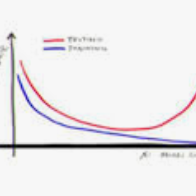In domains where computational resources and labeled data are limited, such as in robotics, deep networks with millions of weights might not be the optimal solution. In this paper, we introduce a connectivity scheme for pyramidal architectures to increase their capacity for learning features. Experiments on facial expression recognition of unseen people demonstrate that our approach is a potential candidate for applications with restricted resources, due to good generalization performance and low computational cost. We show that our approach generalizes as well as convolutional architectures in this task but uses fewer trainable parameters and is more robust for low-resolution faces.
翻译:在计算资源和标签数据有限的领域,例如机器人领域,具有数以百万计重量的深网络可能不是最佳解决办法。在本文中,我们为金字塔结构引入了一个连接计划,以提高其学习功能的能力。关于对隐形人的面部表情识别的实验表明,由于一般化表现良好和计算成本低,我们的方法有可能在资源有限的情况下成为应用的候选方。我们表明,我们的方法在这项任务中既概括了进化结构,也采用了进化结构,但使用较少的可训练参数,对于低分辨率面孔则更加有力。



